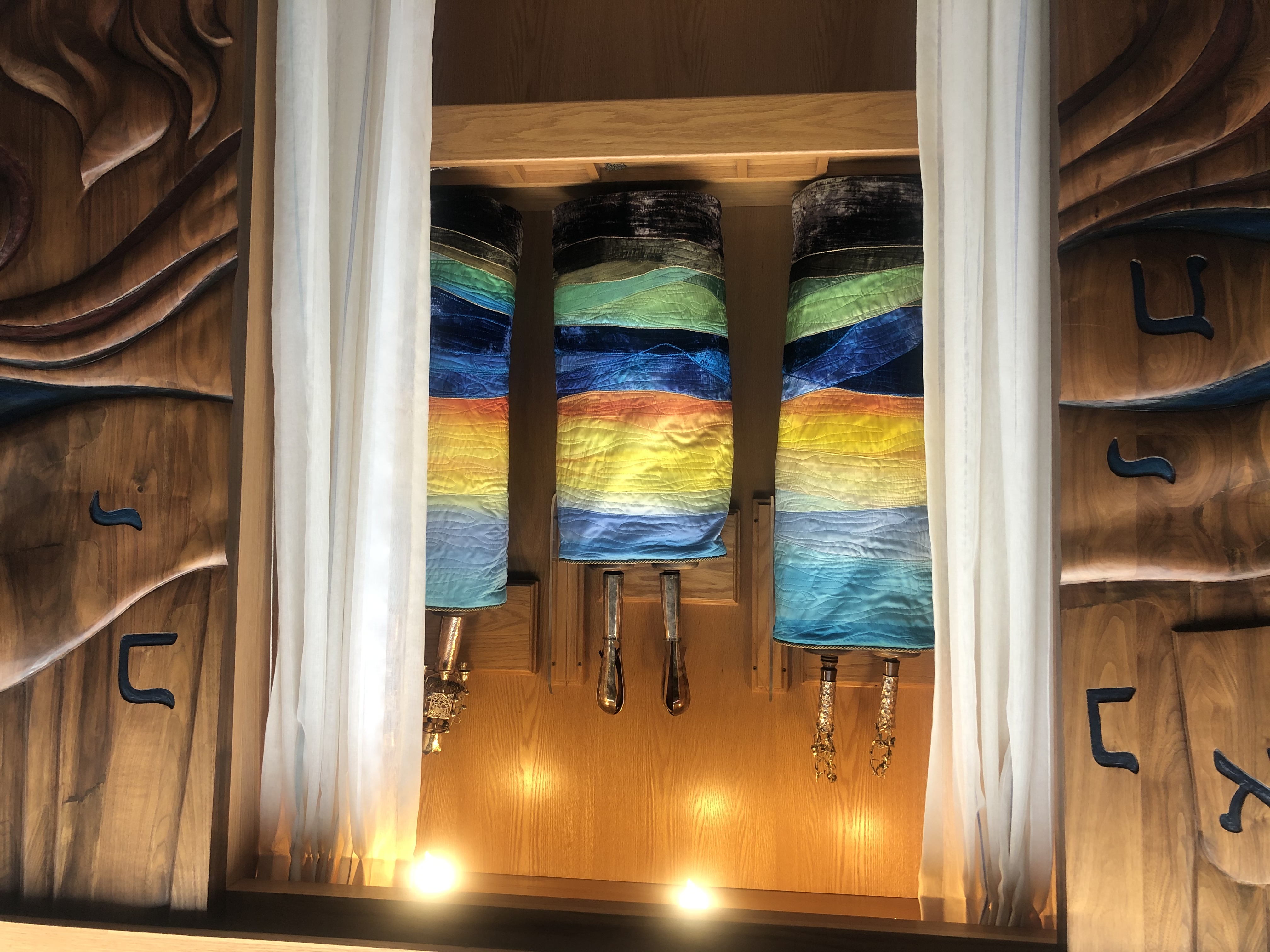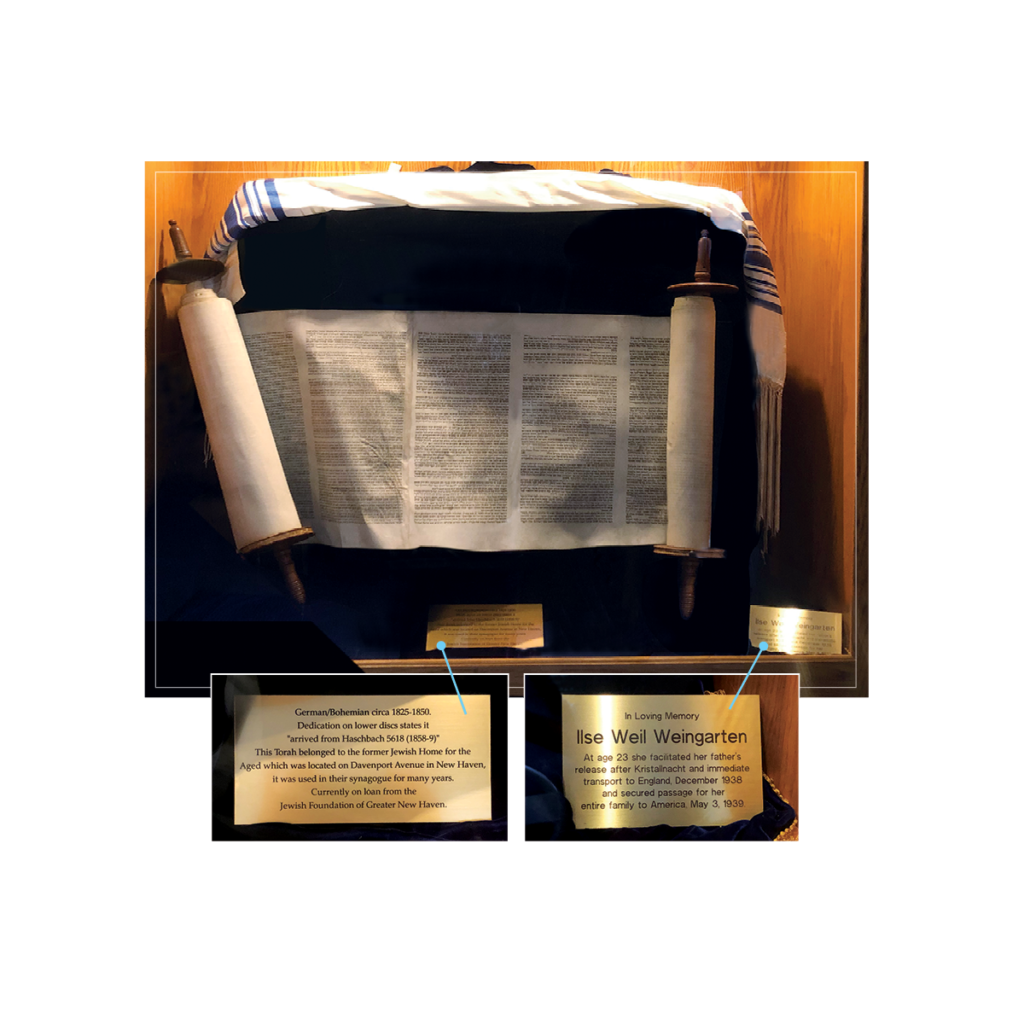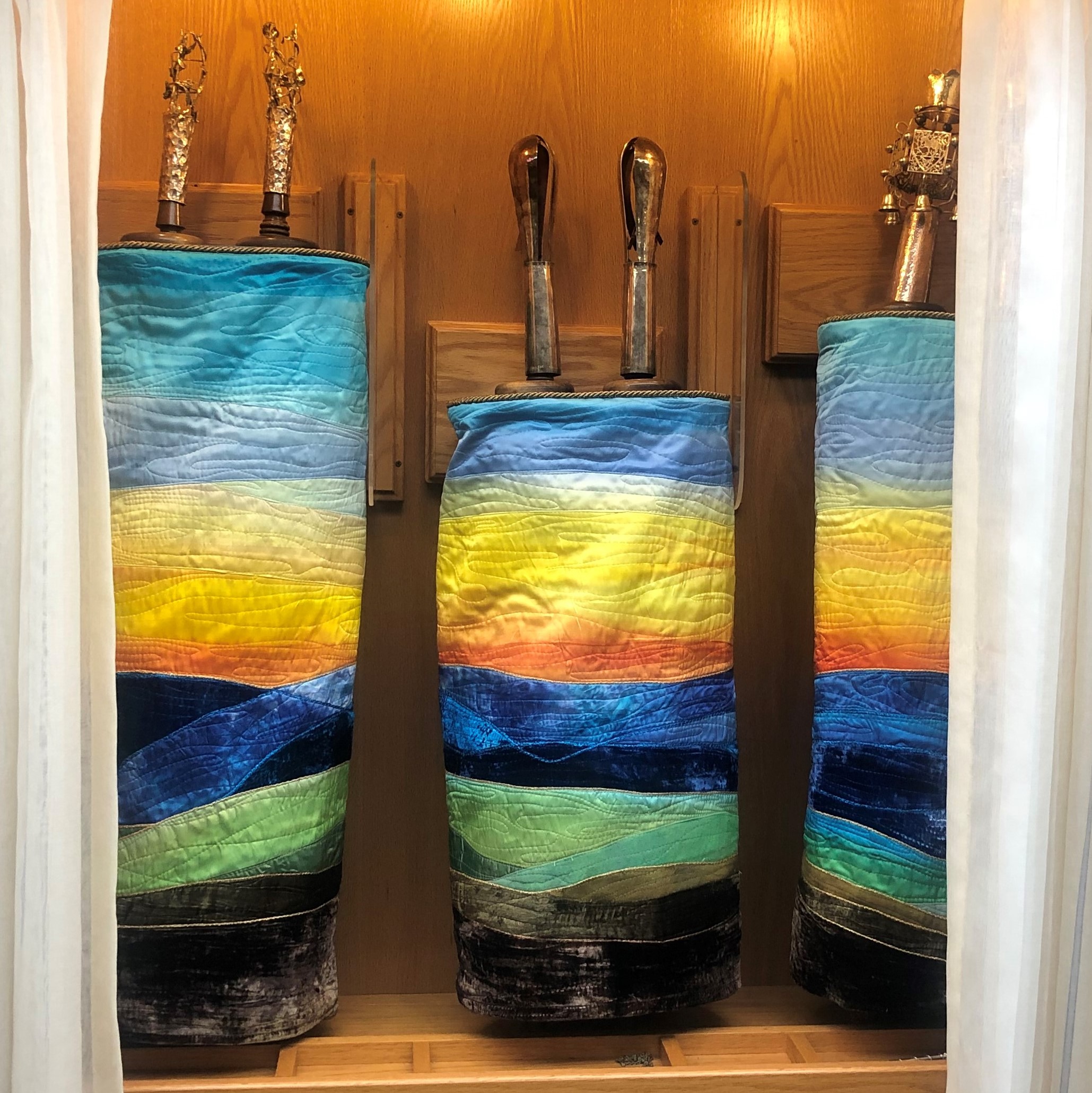by Peter Stolzman

For most Jews, the Torah elicits a variety of feelings and meanings. The scrolls we use in our worship services teach us the lessons and history of the Hebrew people. Some think of the Torah as the divine word of G-d, others feel it is a chronological history of the beginnings of a people.
When the ark is opened and the Torah scrolls are revealed we can look in awe. It awakens a spiritual longing in many as well as a deep connection with who we are and what we are called upon to do. However, we relate to the text it is a symbol, perhaps the primary one, of our identity.
Temple Emanuel is currently home to six Torahs. Some we know a piece of their history and some we are less knowledgeable about. The following is a brief history of our Torah scrolls.
When Temple Emanuel first came together as a community in 1962, we did not have a Torah of our own. Instead, our student rabbi, Robert Goodman, would use a borrowed scroll when needed. In 1967, using our first Torah he performed a triple bar mitzvah for Andrew Levine, Jeff Lipson and Danny Salzman at the JCC in New Haven. TE had just acquired its first Torah, the Holocaust Torah.

Written in 1880, the Holocaust Torah was used in Horazdovice, Czechoslovakia. During WW2 it was “collected” along with other articles of Jewish life, by the Nazis. The scroll’s congregation was exterminated. After the war, this Torah and approximately 1500 others were found and transported to Westminster Synagogue in London, United Kingdom. The synagogue had the room to store them and set about the task of having them restored and repaired. Once in good condition, they were given on permanent loan, to newly established congregations around the world. TE’s Lois and Paul Levine traveled to London to get ours. In 1967 we received #1178, our first scroll.
On a visit to Westminster, I was told that the restoration had been very slow and was expensive, as only trained scribes could do the work. However, in 1965 an itinerant scribe, David Brand, knocked on the door and asked if they might have any work? Twenty years later and after 770 Torahs, he had repaired all he could.
In 2007 this Torah was retired as it needed repairs. It was placed in a display case in the TE lobby until the congregation was able to restore it and return it to active service. It was returned to the Ark in 2020. Every family that wished to be invited to work with the scribe and restore a letter thus fulfilling the commandment to write a Torah. It was a wonderful experience. This Torah is easily recognized as the tallest and lightest in our ark. It is written in Beit Yosef font and is unglazed, making it lighter than a glazed scroll.

In addition to the Holocaust Torah, Temple Emanuel acquired two Torahs in 1979 from Beth Israel in Derby, and in 1981 from Temple Rodeph Shalom of Ellenville, NY. The Ellenville scroll is a small, in height, Torah. It is glazed so it is heavy and is approximately 100 years old. It is originally from Romania and is currently in our ark along with the Holocaust Torah and a medium sized Torah, on permanent loan from the Jewish Home for the Aged by way of the Jewish Federation. We received this Torah in 2021.

The Torah scroll from Beth Israel in Derby was originally from Germany and is about 100 years old. It is said to have “beautiful writing” and is housed in a separate portable ark.
The other gift from Beth Israel, is a Polish Torah. It is housed in the Rabbi’s office awaiting restoration. It is about 90 years old.

Our final Torah is displayed in TE’s lobby. This Torah is also on loan from the Jewish Home for the Aged through the Jewish Federation. We received it around 2020. It is not kosher as it is not in perfect condition and is unrepairable. While we cannot use it for services it is a welcome reminder of who we are when we enter the Temple. It also provides an up-close view of the text and how a Torah is written.
You can learn more about the making of a Torah scroll here.
Some information in this article was gathered from Congregation Beth El’s (Berkeley, CA) website and Temple Emanuel archives and interviews with past and present congregants.
